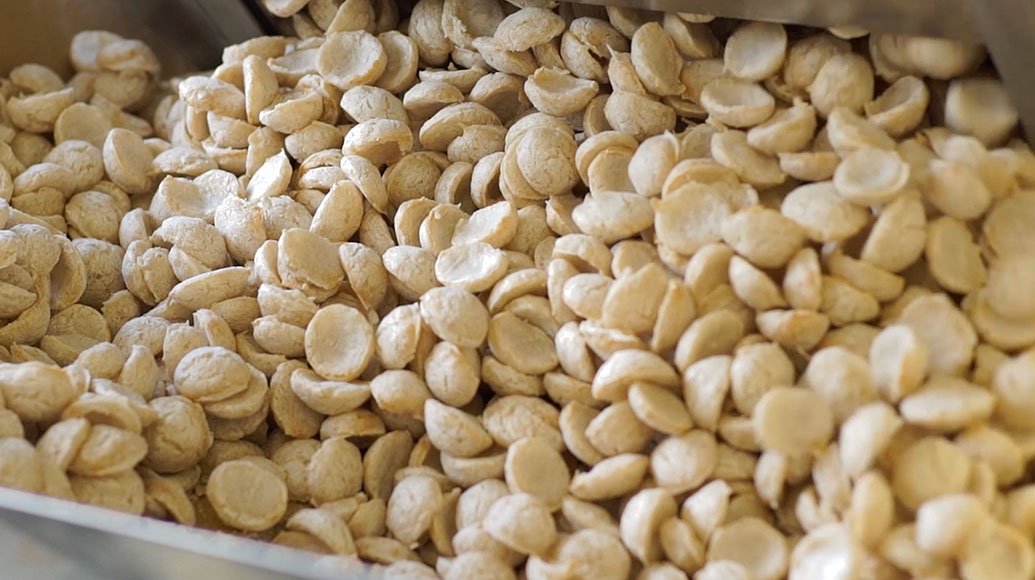Search term must have more than 2 characters.
Healthy diet
First solid food - time for porridge!
The best, most comprehensive and most gentle thing we can fill our little ones' tummies with is without a doubt breast milk. Nature has cleverly equipped it with everything a little baby's body needs. Not only does it provide them with a source of nutrients and fluids, but it also protects them to a certain extent and helps their bodies cope with the " hardships of the world " they are entering. The quality of the milk is, of course, related to the quality of the mother's diet.
Thriving babies don't need any solid food until at least the 6th month of age. The time to introduce solid food into the diet is individual. The fact that the baby drinks around 1 litre of milk per day, has reached a certain weight, is looking forward to the new food and shows clear interest, and for babies who couldn't be breastfed and are given formula, for example, this is usually earlier (sometimes as early as around the 5th month). When deciding whether to introduce solid food, mothers sometimes confuse the natural expressions of their six-month-old baby, who no longer sleeps as hard and therefore wakes up more often at night, with hunger. In this case, evening solid food can't replace the mother's patient care during the night.
Introducing solid food
Around the end of the 6th month of the baby’s development, start with solid food. Gradually start adding vegetables (cooked and pureed), grains in the form of porridge (preferably gluten-free), various types of fruit and later lean meat to the child's originally milk-only diet. Always add each new ingredient individually and observe the child's reaction for a few days to help identify any problems. Add neither salt nor sugar to the child's food.
When being fed, the child must be seated. If they can already do it on their own, they sit in a highchair. Otherwise, you can use, for example, a car seat. Feed the child with a small spoon and start with only 1-2 spoons, gradually adding more. This shows that breastfeeding remains an important part of the diet and the main source of nutrients, fluids and energy in the early stages of adding solid food.
Grain porridges
Grain porridges are usually recommended for evening feeding, but can be included at other times. Non-dairy grain porridge should be mixed with breast or formula. Cow's milk is not recommended until the child is 1 year old.
The grain porridge can gradually be flavoured with a little fruit or vegetable puree and a teaspoon of quality vegetable oil.
Nomina instant non-dairy cereal porridges can be a great help in preparing a small child's diet. They are made exclusively from grains, with no other ingredients. You choose what you add to the porridge. Nomina porridges are easy to prepare, come in a variety of different grains (from rice to wholegrain spelt) and can be combined well with both vegetable and fruit content.
Some of them are also gluten-free. Speaking of gluten in the diet, the approach to its presence in the diet of the youngest children has been completely reassessed recently, and according to official recommendations, gluten (i.e. gluten food) should be added to the diet of children in small quantities as early as in the 4th month of age. However, this opinion is certainly not universally shared. What nutritionists do agree on is that gluten as an allergen should be introduced in small doses into the diet during the breastfeeding period, while the child's immune system is still influenced by the intake of breast milk.
The Nomina porridges are not primarily intended for the youngest children. They aren't classified under this legislative category. They are conventional food. Mothers choose to use them. If you also decide to go for a Nomina porridge, we recommend choosing Nomina millet , Nomina rice, Nomina buckwheat or Nomík initially. These porridges contain less fibre. This must be introduced gradually into the diet of small children. The porridges are filling, well tolerated by children and readily digestible. Last but not least, they're gluten-free. Gradually, you can then offer your children other porridges.



